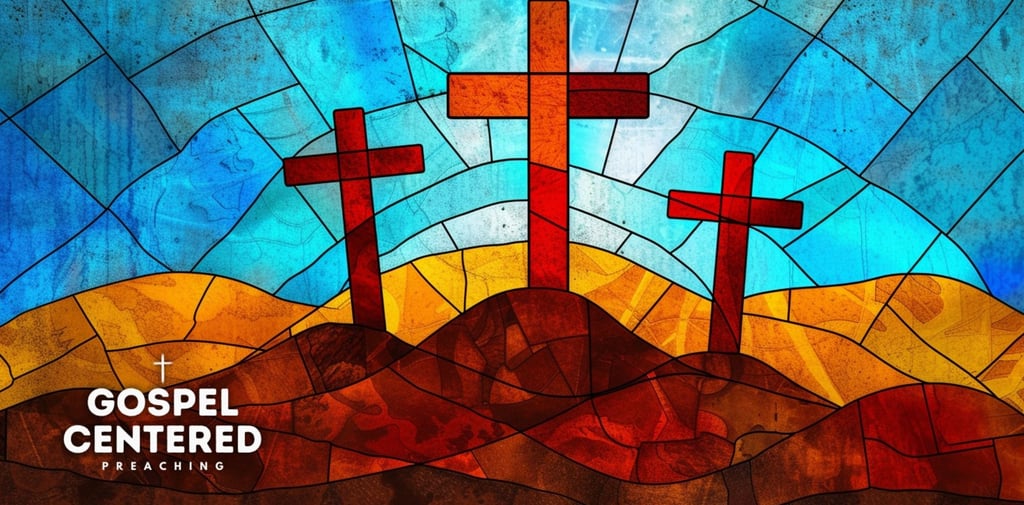Images of Jesus: Understanding the Concerns of the Westminster Standards
Do images of Jesus help or hinder true worship? This post explores the unique perspective of the Westminster Standards, a cornerstone of Reformed theology. Learn why a strict interpretation of the Second Commandment leads to a prohibition against any artistic depictions of Christ. Through historical examples and personal anecdotes, this article prompts thoughtful consideration of the potential for idolatry, our human limitations in picturing the divine, and the scriptural focus on God's self-revelation through His Word.
THEOLOGICAL ARTICLES
Justin Hoke
2/9/20243 min read


Visual representations of Jesus have been a recurring point of discussion throughout Christian history. Whether seen in a classic Renaissance painting or a modern film adaptation, such images inevitably shape our mental picture of Christ. Yet, a specific segment of the Reformed tradition, as enshrined in the Westminster Standards, presents a compelling counterpoint. Let's examine their position and why it warrants careful consideration.
Introducing the Westminster Standards
If you're unfamiliar, the Westminster Standards refer to a series of guiding documents within the Reformed theological tradition. These include:
The Westminster Confession of Faith: A systematic outline of Christian belief.
The Larger Catechism and Shorter Catechism: Instructional tools in question-and-answer format, covering a range of doctrinal topics.
For our discussion today, a specific question from the Larger Catechism is of central importance.
The Second Commandment, Representation, and Question 109
The Second Commandment (Exodus 20:4-5) prohibits the creation and worship of “graven images”. The Westminster Standards interpret this broadly, addressing any and all attempts to visually depict God – be it the Father, the Son, or the Holy Spirit.
Here's how Question 109 of the Larger Catechism puts it:
Q: What are the sins forbidden in the second commandment?
A: The sins forbidden in the second commandment are, all devising, counseling, commanding, using, and any wise approving, any religious worship not instituted by God himself; tolerating a false religion; the making any representation of God, of all or of any of the three persons, either inwardly in our mind, or outwardly in any kind of image or likeness of any creature whatsoever…
Key Concerns Within the Westminster Position
Let's unpack why those who drafted the Westminster Standards found images of Jesus problematic. There are three major concerns:
The Subtle Slide towards Idolatry: Even images created with pious intentions have the potential to become objects of misplaced devotion. Rather than being aids to worship, they might ironically become the central focus, distracting from the true, invisible God they seek to represent. History offers sobering reminders of this tendency towards idolatry.
Human Inability to Capture the Divine: As finite humans, no artistic rendering of Jesus in his divinity can hope to encompass the fullness of his nature. Even well-intentioned portrayals are born of subjective imagination and ultimately create a distorted perspective of who Christ truly is.
Scripture as the Supreme Guide: The Westminster divines were convinced that God has fully revealed himself through the Scriptures. This written testament offers a complete and authoritative understanding of Jesus Christ, including the depth of his love and power. To rely primarily on images risks relegating the Word of God to a secondary position.
A Personal Connection
These aren't just theoretical concerns. My wife encountered this first-hand. Initially introduced to Christianity through a cinematic version of the Gospel of Luke, she eventually felt that her reliance on the actor's image obscured her ability to connect directly with Christ. Intuitively, and without ever being exposed to the Westminster Standards, she moved away from visual aids, choosing to approach Christ through His own revealed Word.
A Nuanced Issue
I acknowledge that many who embrace images of Jesus do so with the specific intention of honoring his human nature, to the exclusion of his divinity. Yet, the Westminster theologians would still urge caution; even that distinction remains subjective and, therefore, prone to blurring lines.
An Invitiation to Critical Thinking
The Westminster Standards invite a critical assessment of how images shape our understanding of the divine. In our visually-obsessed world, their stance raises pertinent questions. Is there deeper power in unmediated connection with God through the Bible? Does our use of images unwittingly dilute true reverence for Christ?
I welcome your own reflections on this issue, regardless of whether you completely agree or take a contrasting view. It's a worthy question for ongoing and respectful discussion within the body of believers.
Let me know if you'd like further expansion on any aspect of this, or more Scriptural support!
For Further Study:
